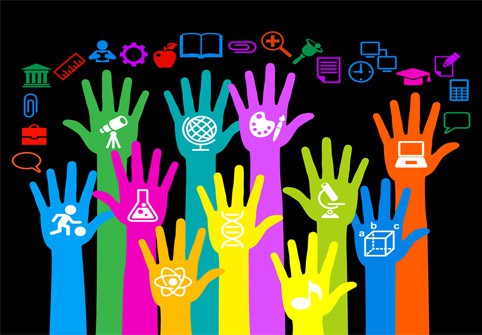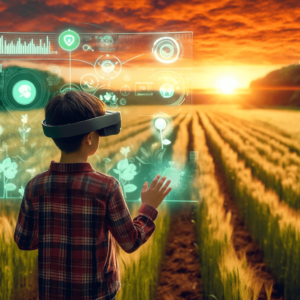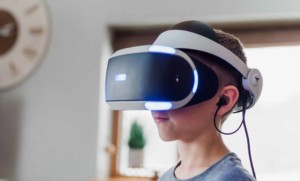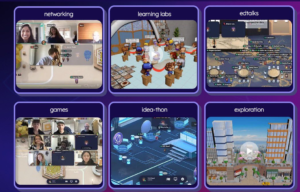How Augmented Reality Can Change Teaching

By Ken Myers

The technology behind Augmented Reality is taking a real-world view and enhancing it with computer-generated imagery. Whether this is done by using a computer monitor and camera or fitted goggles to imprint imagery in the lenses, augmenting in this manner has great possibilities for a variety of tasks.
Educators of all kinds are implementing this technology and the progress has been nothing short of excellent. Children that use this technology have remained focused on the task and have seemed more attentive to the lesson. How can AR technology impact our educational system for primary and tertiary learning?
1. 3D – Objects viewed in the AR environment have a 3D appeal that can be moved and changed through personal interaction. From counting square blocks for rudimentary math to viewing works of art from every angle, students are entranced by the technology.
2. Cause and Effect – Although interactive educational programs are nothing new, there is something to be said about visualizing changes in real-life. Students can manipulate and change the object in front of them through programmed commands.
3. AI – Artificial intelligence has been experimented on with AR objects. Could you imagine the impact it could have on a student to have a recital of the Gettysburg Address read aloud by Abraham Lincoln himself? The AI for some experimental programs have even been able to react to real-life objects being placed next to them.
4. Representation – Through the use of the cards as part of the AR learning technology, students can observe a realistic representation of the object. Other cards can be used to gather information about the object and display it to the student on the monitor or AR goggles. For instance, students are able to see what a water molecule looks like in 3D and can gather information about how H2O is formed.
5. Reading – For young children, interactivity is a strong influence in learning. How enthralled would your child be using a pop-up book that seemed to really pop up? Sights and sounds can be a method of showing a child what animals sound like in real-life, enhance the background ambiance while reading, and more. A book about trains could engage the reader and make them feel like they were standing at the station.
6. Ancient Civilizations – For a professor trying to teach about ancient civilizations without artifacts to exhibit, AR technology can bring the artifacts to them. Whether it is an individual student examining every angle of the artifact or the professor displaying the artifact on a projector for all to see, the enhancement could bring more of a hands-on approach to teaching.
7. Dissections – Augmented Reality gives us the ability to literally remove layers from a body for a more detailed examination. Of course, this could also work in a drafting class by peeling away the layers of a building to demonstrate to the students why certain framework is important to construction.
8. Space – There are smartphone and tablet apps that will allow you to view the sky and spot stars and constellations while providing their names. However, how much greater of an educational value would they have if they could bring the planet or star closer to them with statistical information?
9. Landmarks – Again, apps utilizing your GPS location can provide your information about the historical landmark you are viewing. With AR technology, that landmark or statue could essentially come to life on your screen and tell you its story first hand.
10. Alive Textbooks – What if we take the reading aspect above and take it a step further. Augmented Reality can give a textbook the means to show examples of the content to the reader for greater clarity.
The full scope of AR technology has endless possibilities. Students are able to affect a seemingly real-world change through the use of computer-generated imagery. This imagery can be programmed for virtually any subject matter. The 3D imagery through AR technologies gives us a greater ability to examine any given object from all angles. It will be interesting to see what other technologies implement AR in the future.
Ken Myers is the founder of http://www.longhornleads.com/. Ken has a MBL from Upper Iowa University and multiple bachelor degrees from Grand View College.
Photo Courtesy of BigStock.







Tom Vander Ark
Great summary of AR applications; another promising one is AR field trips. See summary of Chris Dede's AR science field trips http://www.gettingsmart.com/gettingsmart-staging/cms/blog/2012/05/an-odd-couple-of-measuring-21st-century-skills/
A walk to the pond will never be the same!
Priya Nihalani
We *just* completed an AR prototype for a major publishing house this past Friday. The most detrimental misunderstanding I foresee is the failure of instructional designers to put user constraints on the 3D models. We all know that pedagogical effectiveness is often lacking where technology-based learning is concerned but because I've always had such a high personal interest in AR I'd like to ask we all be especially mindful to engage in iterative design & development cycles. I'm excited to support K-12 in AR tools - the possibilities are so exciting!
Dr. Priya K. Nihalani, CEO
GetYa Learn On (GYLO, LLC)
[email protected]
Paul Hamilton
Great summary of AR.
I have been working with Augmented Reality in education for sometime now, especially with learning support children.
Here is an example in the Maths area.
http://www.youtube.com/watch?v=8Zb2spZvHFQ
Getting really good results.
Have a Science AR app coming out in January which I'm really excited about. Free posters for schools come with it.
Paul
[email protected]
Matt Dunleavy
My colleagues and I have been working on an AR development platform called FreshAiR that enables anyone to create mobile and interactive AR learning experiences: http://www.playfreshair.com/. Currently, FreshAiR is being used by educational technology research groups including Chris Dede's EcoMOBILE project at the Harvard Graduate School of Education that Tom is referencing. EcoMOBILE has a website with a video, which will provide some additional insight into how they are leveraging the affordances for scientific inquiry activities: http://ecomobile.gse.harvard.e.... There is a lot to research in this emergent field and I am interested what other projects or teams (e.g., UW-M, MIT) are currently working in this area. Any ideas?
SAVI Koissi
Great the summary about the Augmented Reality but I have two questions for whoelse can aswers me.
First of all the whole advantage from AR we can get, which one is really used by younth?
And what about tthe furture of poor country (developing country) which like to have updating citizen but stoped by poverty?
Priya Nihalani
Delayed response to Matt's previous comment -
Matt - we've contributed to that work of Chris Dede's that both you and Tom mentioned. Currently, we are designing a similar project but in two different domains that seem to be lacking attention in the AR space. Would be happy to discuss further at some point.
Priya
Satya Prasad
Hi, the article really helps in learning the dimensions of augmented reality. We have developed a series of coloring book for kids of the age 4 to 8 yrs. It also has information for their learning. Also, we have developed flash cards which can be used. Please visit www.augmentworks.com/magicjoey to know more.
This article gives me more ideas and helps me to uncover the various horizons of AR. thank you Mr Ken Meyers.
Satya Prasad
Business Head | Augment Works